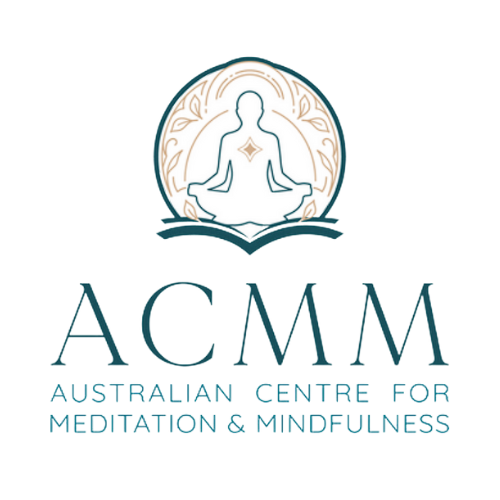Meditation Teachers should have a solid meditation practice in order to teach. So just how much do meditation teachers need to meditate?
The Dalai Lama said that “All human beings have an innate desire to overcome suffering, to find happiness. Training the mind to think differently, through meditation, is one important way to avoid suffering and be happy.”
Why do we teach meditation?
Teaching meditation is an enriching and rewarding experience that empowers and relaxes others and deepens our own understanding and practice. Why else would we teach meditation but to help people get to know themselves, and think and relate differently to others, the world, and their relationship with suffering and happiness? The essence of meditation and to living a peaceful life is to accept and process life as it is rather than as we think it should be. This is simple but not easy and requires ongoing practice.
To teach others to train their mind to look inward and change the way they relate to themselves and the world, as we do in meditation, we might first change the way we relate to ourselves and the world. Mahatma Gandhi said, “Be the change you wish to see in the world.” By having a regular meditation practice we can set an example, teach with authority, integrity, and influence (and without hypocrisy), and share proven techniques and support from the wisdom of experience. This means our own practice needs to be solid.
Know Your Why
So, why do you teach meditation? Perhaps you love learning about meditation practice and philosophy, and you want to deepen your personal practice? Perhaps you have clients with whom you want to share powerful techniques that improve life, work, and health? Or perhaps you are simply passionate and feel called to teach meditation?
Whatever the reason, your own personal meditation practice is perhaps the greatest teacher and tool available to inform your teaching. If we are here to learn what we are here to teach, we need to practice what we preach. Then how much does a meditation teacher need to meditate? Every day is best.
 So how often does a meditation teacher need to meditate?
So how often does a meditation teacher need to meditate?
Meditation works best when we commit to practicing daily. Maintaining this regularity of practice over time enables us to observe the mind intimately enough to know how to change it, and to rewire the neural pathways that correspond to new ways of thinking, feeling, and behaving.
Practice What You Preach
As a meditation teacher, mentor or guide the most important thing is to set a good example by practicing what you preach. Would you learn guitar from someone who doesn’t practice playing the guitar? Would you take dietary advice from someone who eats junk food all day? If you’re going to teach others to meditate, you need to develop a solid practice of your own.
Someone who meditates regularly is more likely to cultivate and express the qualities of kindness, compassion, love, balance, equanimity, peace, and joy. A good teacher is someone who models these qualities, authentically cultivated, and embodied through their own regular practice.
Helping Beginners
Use your daily practice to continue deepening your understanding in any way you can; complement your practice by reading, watching, listening, writing, and talking to people about meditation. Understanding different perspectives and techniques will help you navigate your own practice and better understand your students; particularly beginners. Teaching beginners requires an understanding of many techniques and their benefits to allow students to see what works for them. The best teachers are continuous learners, and never feel they know it all. They remain humble, grateful, and ready to learn.
Setting an Example
As a teacher, first and foremost we are setting an example of what commitment and dedication to meditation practice can look like; namely presence, connection and centredness (as well as being human). We then model these qualities of non-judgment, an open mind and heart, acceptance, and letting go through our teaching.
Modelling these qualities cultivated from an established meditation practice is a very effective way to lead and teach others. The best teachers do this, they teach from the heart, from (a) knowing that it doesn’t come from a book. In this way the best teachers, “show you where to look but don’t tell you what to see.” (Alexandra K. Trenfor) because they know that although we are all uniquely different, we are essentially the same at the level of Being.
By modelling the embodied benefits of regular meditation, a good teacher stands for the truth, reminds and inspires us to keep collecting the mind and return it to Being, especially when our mind is distracted, doubtful or resistant.
Self-awareness is Golden
It could be said that the primary gift of meditation is awareness, particularly self-awareness. With regular meditation our practice can evolve, and we can continue to grow in awareness. With regular practice we can begin to know who we truly are and experience the inherent qualities of our Being, those of openness, peace, presence, love, gratitude, and compassion, and we might begin to see that these universal qualities are always here.
There is no finish line: a set and forget moment when all is complete and realised. It’s called a practice for a reason, and that regular practice enables us to connect or stay connected to our inner wisdom, and infinite source of love, and creativity. My best ideas sure seem to arise in meditation and my meditation teaching business thrives as my practice does.
What makes a good meditation teacher?
A good teacher walks this path of growing self-awareness through their personal practice. They know (and keep learning) the nuts and bolts of how meditation works, can shine a light on the path for others and can offer a gentle hand when needed.
A good teacher can encourage, support, reassure and motivate their students. They can answer curly questions and help students navigate challenges when they arise. They can help students be committed and accountable because they know meditation is simple but not easy to establish a regular practice to enjoy the long-term benefits of practicing; namely avoiding suffering and being happy. All this requires an ongoing practice of our own.
Setting Students Up for Success
Good meditation teachers set their students up for success by establishing a conducive environment (both inner and outer) and sharing proven techniques that help to cultivate self-awareness, to see and understand the workings of the mind and in this way begin to ‘know thyself’.
 How much practice is needed?
How much practice is needed?
So, how much practice is enough? How much does a meditation teacher need to meditate? Like playing a musical instrument, learning a language, physical exercise, or maintaining any skill, we need to practice continuously to maintain proficiency and stamina. When learning any skill, the more we practice, the better we get. Just as we train the body, there is no prescribed amount of practice time to aim for. It takes the responsibility, honest and integrity of each teacher to know how much meditation time they need to maintain peace, equanimity, to remain calm, clear, and present with their students, to teach with credibility and set a good example.
Quality vs Quantity in Meditation Practice
It’s not just about quantity, but quality of practice. When we allow ourselves immersive meditative experiences, we’re not only more productive and creative, but we also feel better. Whilst 1-2 hours of practice a day may be ideal, it’s more about the quality of that time. The benefits of meditation practice are experienced when you fully immerse yourself in it, when you commit yourself wholly.
How much time does it take?
Numerous studies show that those who meditate each morning for 1 hour are happier, healthier, and more successful than those without meditation. Perhaps you can afford to dedicate 2 hours of meditative practice per day? Or you practice once, twice or more times a day? Do you practice mindfulness as you go about your daily activities or you choose to live mindfully, present, and aware, essentially being in meditation in every moment of your day?
In summary, a meditation teacher should meditate as much as they need to maintain, embody, and express qualities of balance, equanimity, compassion, and love – the innate qualities of Being – and to know well the techniques they are teaching others. What other goal is there but to turn within, to know thyself and to live from the qualities of our true Self, infusing life with energy of peace, love, and unity? To journey this path with Self through our daily practice we are better able to facilitate and support others to journey theirs.
At ACMM we offer Certificate, Advanced Certificate and Diploma Training Options, with optional Business Development Support alongside and after your training.
PLUS we now offer a Community Work Placement program for all graduates, where students will be given opportunities to teach meditation within support service organisations such as Aged Care, Hospitals and other Not for Profits and receive all they need to teach a 6 week course. Click here to learn more.
Find out if our courses are the right fit for you. Book a Zoom Discovery Call with us today!
Blog by ACMM Coach Jen Hill


 So how often does a meditation teacher need to meditate?
So how often does a meditation teacher need to meditate?
 How much practice is needed?
How much practice is needed?


